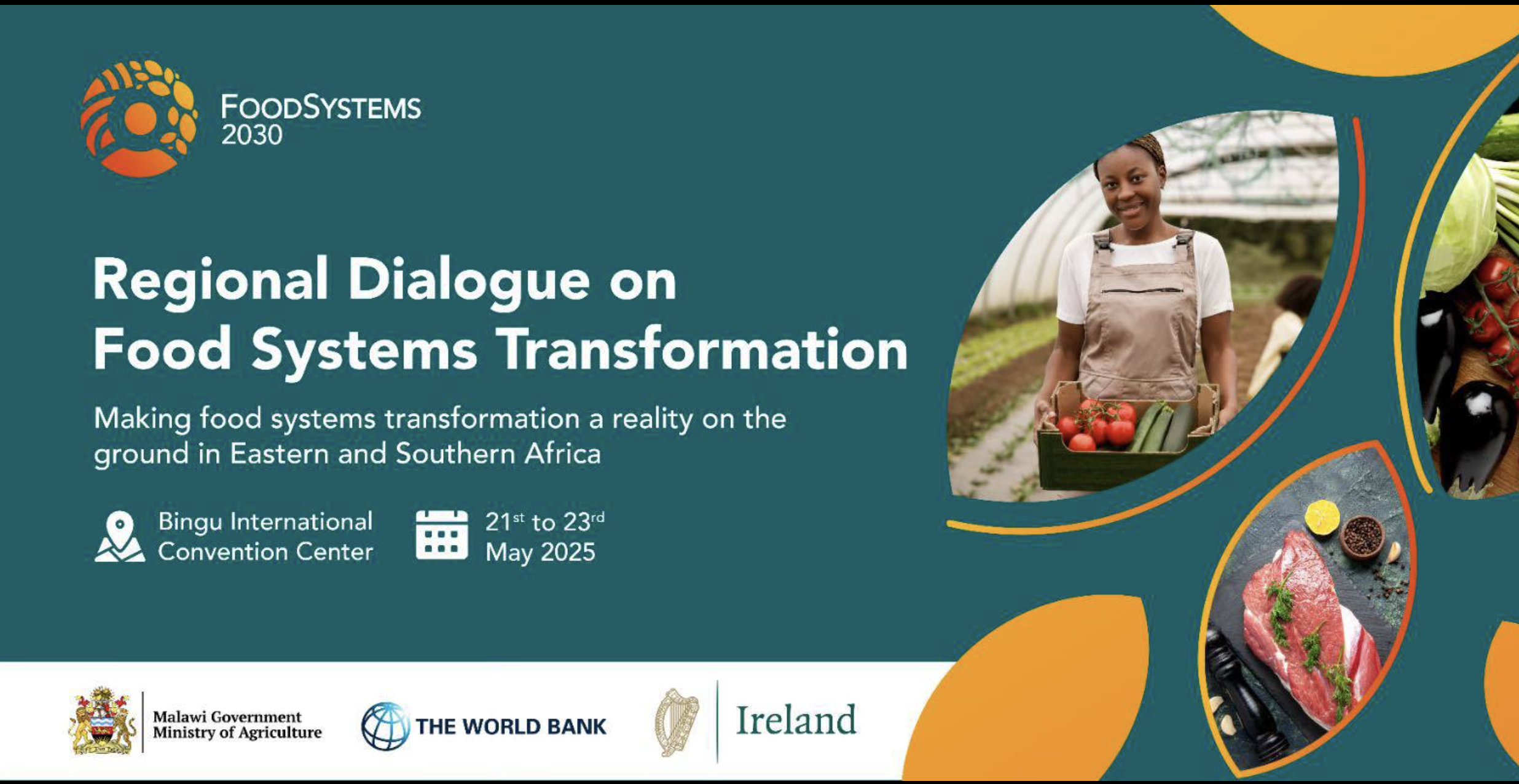
By Special Correspondent | Lilongwe, Malawi — May 2025
As climate change continues to reshape the global agricultural landscape, Alexander Lotsch, Senior Climate and Agriculture Specialist at the World Bank, delivered a stark yet hopeful message at the Regional Dialogue on Food Systems Transformation in Lilongwe, Malawi. His session, titled “Building More Resilient Agri-Food Systems for the Future,” was both a wake-up call and a strategic guide for African policymakers, financiers, and development actors.
“If we do not invest in resilience now, climate shocks will undo decades of progress,” Lotsch warned. “But if we act boldly, Africa can become a global leader in climate-smart food production, with lasting benefits for farmers, consumers, and ecosystems.”
With a blend of hard data, practical frameworks, and financing models, his presentation offered a roadmap for transforming risk into opportunity through climate-smart agriculture (CSA) and innovative financing instruments.
The Cost of Inaction: Climate Risks to African Agriculture
Lotsch opened his presentation with a sobering fact: unmitigated climate change could push tens of millions more people into hunger, especially in Africa. He emphasized that rising temperatures, erratic rainfall, and increasing pest outbreaks are already threatening yields, food prices, and rural livelihoods.
“Sub-Saharan Africa is the region most vulnerable to food insecurity induced by climate change,” he stated, referencing the International Food Policy Research Institute (IFPRI) data from 2022.
However, the message wasn’t all doom and gloom. According to World Bank analyses, 15% of the world’s most affordable agricultural mitigation potential lies in Sub-Saharan Africa—a region that can offer both environmental and economic returns through smart land and production system management.
“This is not just a crisis—it is an opportunity,” Lotsch emphasized. “Africa’s farms can become carbon sinks, employment generators, and economic engines, all at once.”
Multiple Wins: The Promise of Climate-Smart Agriculture
The centerpiece of Lotsch’s strategy is Climate-Smart Agriculture (CSA)—a holistic approach that enhances productivity, builds resilience, and reduces emissions.
He illustrated how CSA practices offer multiple wins across:
- Land use changes: including reforestation, agroforestry, and soil restoration.
- Pre- and post-production: focusing on efficient irrigation, conservation tillage, and cold-chain storage.
- Farm gate technologies: such as drought-tolerant seeds and precision agriculture tools.
“These practices not only boost yields and soil health, but also cut emissions and lower long-term costs,” he explained.
Importantly, CSA is not a one-size-fits-all model. Lotsch emphasized that both low-tech and high-tech solutions—from manure composting and mulching to satellite-guided irrigation systems—have critical roles in different agro-ecological and socio-economic contexts.
Financing the Transformation: Leverage, Layer, and Bundle
Lotsch stressed that one of the biggest constraints to scaling CSA is access to affordable and flexible finance.
To address this, he proposed a financial architecture built on three principles:
- Leverage: Using public resources to attract private capital.
- Layer: Blending concessional finance with commercial instruments to manage risk.
- Bundle: Integrating finance with insurance, advisory services, and digital tools.
“Africa cannot build resilience without de-risking private investment in its food systems,” he argued. “We must design financial instruments that reward adaptation and penalize climate inaction.”
He called for cross-sectoral food system climate action plans that connect ministries of agriculture, finance, environment, and planning—ensuring that financing matches national goals and regional needs.
Regional Collaboration: Scaling CSA Across Borders
Lotsch made a strong case for regional action, noting that climate challenges—and solutions—often transcend national boundaries.
He highlighted a collaborative CSA scaling initiative supported by the World Bank across Kenya, Ethiopia, Malawi, Tanzania, Zambia, and Comoros. This program aligns with CAADP (Comprehensive Africa Agriculture Development Programme) frameworks and builds on local innovations while tapping into global expertise.
“This is about harmonizing climate-smart practices across landscapes, not just countries,” he said. “If we align policies and investments across borders, we can build resilience faster and more cost-effectively.”
He stressed the need to amplify regional knowledge sharing, invest in cross-country pilot projects, and replicate what works through African-owned institutions.
De-risking at Scale: From Farmers to Policy Makers
A major theme of Lotsch’s presentation was de-risking—making agriculture safer for everyone from the individual farmer to the national policymaker.
For farmers, this includes:
- Weather-indexed insurance
- Access to real-time climate advisories
- Diversified livelihood options
For governments, de-risking means:
- Reducing fiscal exposure to food import shocks
- Investing in preventative rather than reactive measures
- Attracting more stable private sector engagement in food systems
“Risk is not the enemy,” he said. “Unmanaged risk is.”
He urged African governments to embed risk management frameworks into national food strategies and to create “food system climate resilience dashboards” for performance tracking.
Final Reflection: Resilience as a Policy Imperative
As his session concluded, Lotsch made one final appeal: Resilience is not a luxury—it is a necessity. He reminded the audience that the choices made in the next decade will determine whether Africa’s food systems collapse under pressure or thrive through innovation.
“Let us bounce back from shocks, prepare for tomorrow, and manage risk as a collective. Because in this climate era, resilience is the new currency of development,” he concluded.
With practical solutions, bold financing models, and continental coordination, Lotsch’s message was a rallying call for Africa to lead the way in climate-smart food systems transformation—because the continent has both the need and the potential to do so
